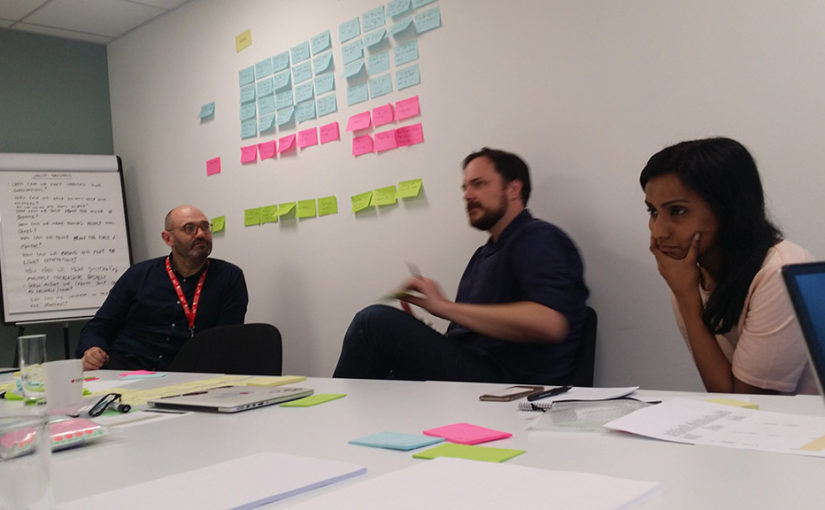At the end of 2016, I took part in a design sprint looking at the unionfinder functionality on the TUC website. The tool matches thousands of people to TUC affiliated unions every month, but it could be easier for users, more accurate in its matching, and better suited to finding and recruiting new members.
I was there representing the NUJ, but I also brought with me experience in working on sprint projects and certification as a ScrumMaster. This is a new project methodology for the TUC and for most unions.
There’s lots I could write about what Scrum is, what defines a sprints and the role of a ScrumMaster, but those who are really interested can read all about it on the Scrum Alliance site.
The important thing is that Agile Scrum project methodology has been slowly coming out of the world of tech and software development and is increasingly being used in other sectors. It offers quite a few benefits that could be of use to the trade union movement.
One important one, which was an important part of the TUC design sprint, is how it helps to manage all stakeholders. If anyone is aware of the difficulties of designing by committee, it’s the trade union movement! However, trying to avoid that can also mean that useful ideas are lost because people don’t have an opportunity to contribute.
Agile recognises the benefits of widespread stakeholder input, but also the need for the people who are doing the work to be left alone to get on with it. In the initial scoping phase, everyone who needs to contribute is given the opportunity to do so. Agile also has a range of tools that can be used to make the most of these sessions – post-it notes are often to be seen plastered all over walls. Once the scoping is finished, the stakeholders pass the work over to the people working on the project – and don’t interfere until the sprint is finished.
The most important aspect of Agile is the way projects are structured. Unlike traditional “waterfall” project management methodologies like Prince2, Agile is incremental. The project does not start with a detailed plan for the whole project with phases of different work. Instead, Agile projects are organised into sprints, often one month long, and reviewed and projects are reviewed and potentially revised between each sprint.
And a sprint brings together a multidisciplinary team to work together on a defined part of the project. That makes it much easier to revise the plans compared to “waterfall” projects where, by the stage of implementation, the design and plan for the whole project has been written and timetabled.
For this particular sprint workshop, we had an external facilitator and developer, plus people with comms, organising and digital experience from the CWU, GMB and TUC as well as myself.
We conducted user research that helped us get a more accurate picture of the user needs – from the perspective of the person using the tool as well as from the union organisers’ perspective. We identified barriers, challenges and opportunities that came from this.
The design sprint led to a paper prototype of an ideal improved system, and better insight into future projects the TUC will need to take to get there (how we’ll overcome the barriers we found). The first of those pilot projects is already underway – taking a defined part of the joining journey – how the TUC can help pass members more effectively into unions once they’re identified, signing them up and encouraging others to join.
Unions work in an unpredictable world and often find best-laid plans go awry as outside events become the priority. Agile projects can more easily adapt to outside events as a change within a one-month sprint doesn’t wreck the entire project.
Unions need to become more responsive and flexible, Agile project methodologies are designed to do just that.
Donnacha Delong is a freelance agile and digital consultant, and lay organiser with the National Union of Journalists.

